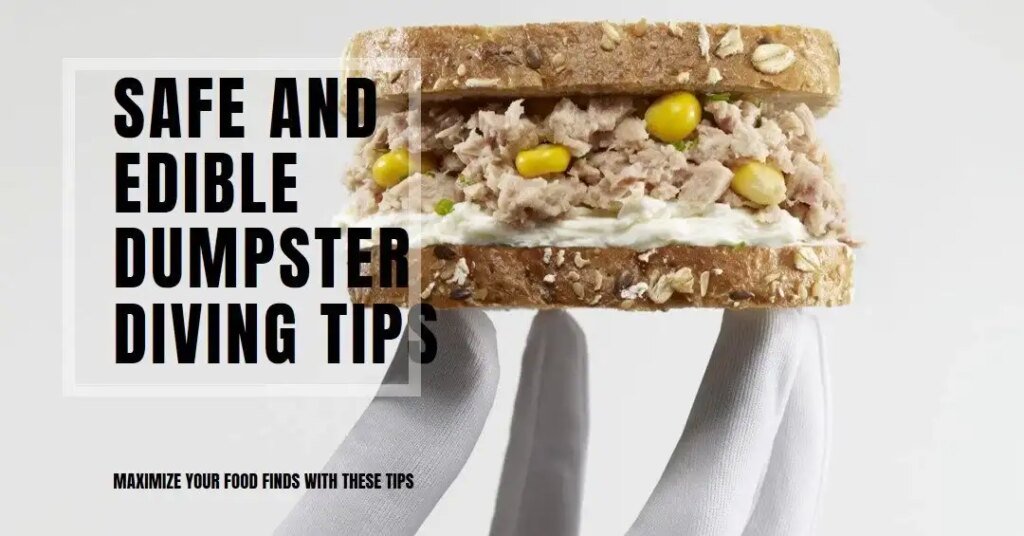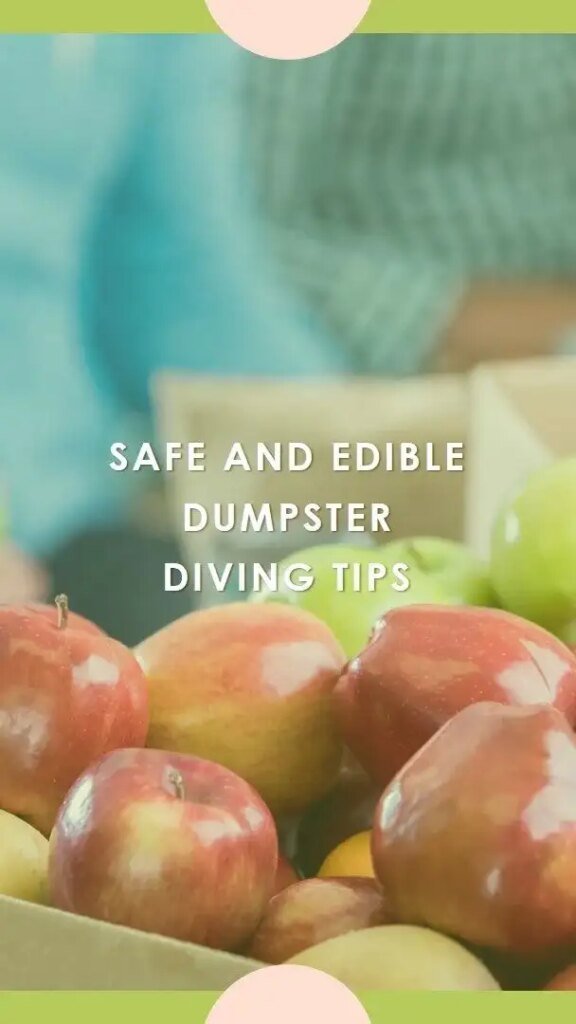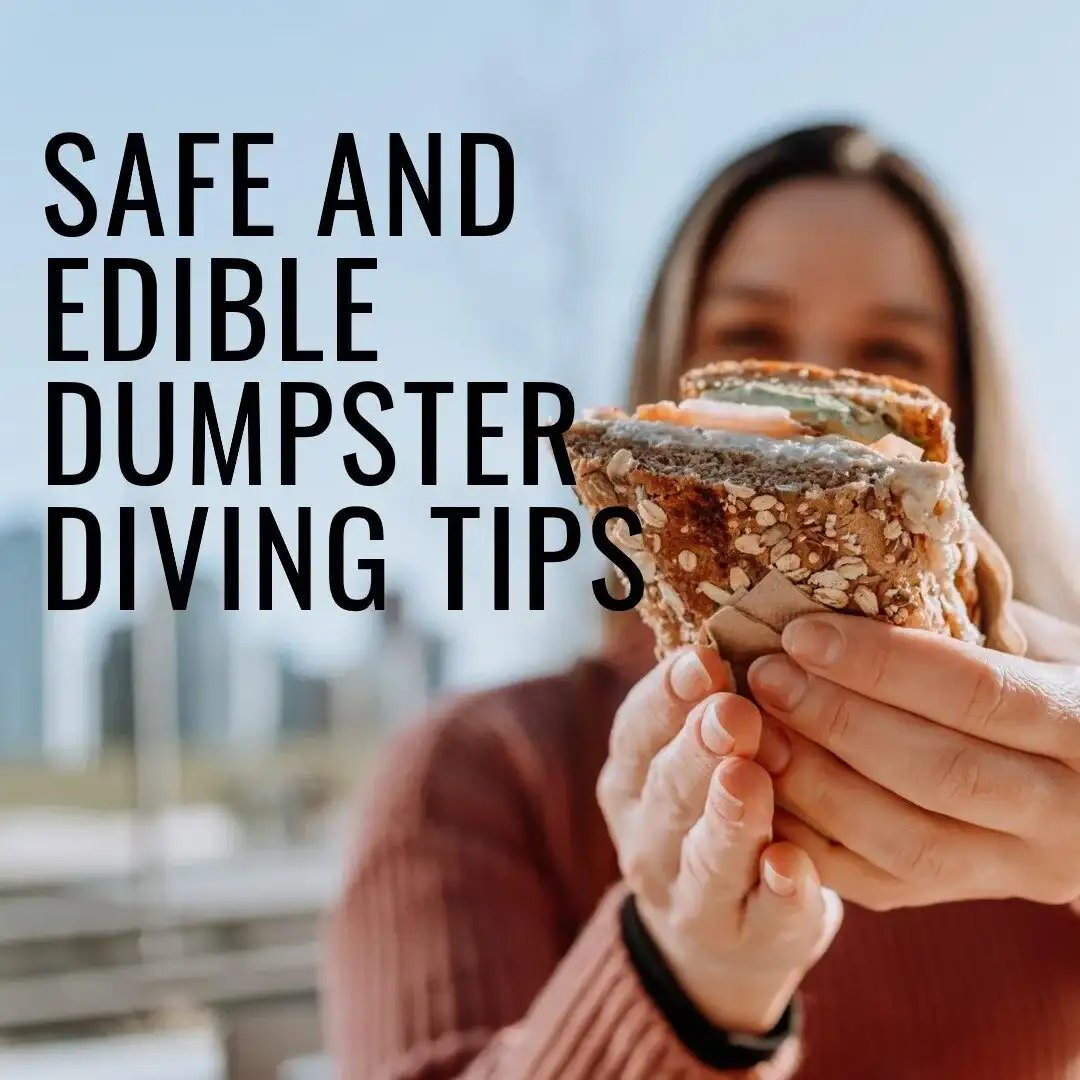Dumpster diving for food is the practice of searching through bins and dumpsters in search of edible food that has been discarded by grocery stores, restaurants, or other establishments. It is often carried out by individuals who are seeking to reduce both food waste and their own food expenses. Despite its unconventional nature, dumpster diving has gained popularity as a means of obtaining free food and reducing environmental impact.
The benefits and risks of dumpster diving for food
There are several benefits to dumpster diving for food:
- Reducing food waste: Dumpster diving helps to minimize the amount of perfectly good food that ends up in landfills, contributing to the global issue of food waste.
- Saving money: By finding edible food in dumpsters, individuals can save on their grocery bills and allocate their budget to other expenses.
- Promoting sustainability: Dumpster diving aligns with the principles of sustainable living by reusing and repurposing goods that would otherwise go to waste.
However, there are certain risks associated with dumpster diving for food:
- Health and safety concerns: Consuming dumpster-dived food carries a potential risk of contamination or spoiled products. Caution must be taken to ensure the safety and freshness of the food.
- Legal implications: Dumpster diving for food may be considered trespassing in some jurisdictions. It is important to understand and respect the laws and regulations in your area.
Overall, dumpster diving for food can be an alternative way of sourcing affordable food and reducing waste, but individuals should exercise caution and be aware of the potential risks involved.
Safety Precautions
Dumpster diving for food can be a cost-effective way to obtain free food while reducing waste. However, it is essential to follow certain safety precautions to protect yourself and ensure the freshness of the food you find. Here are some tips to keep in mind when choosing the dumpsters to dive into:
- Look for dumpsters behind grocery stores or restaurants that handle perishable food items.
- Avoid dumpsters that are filled with non-food items or hazardous materials.
- Use visual cues, such as overflowing with fresh produce or bakery items, to identify potential food-rich dumpsters.
- Be mindful of the cleanliness and odor of the dumpster. A clean and odorless dumpster is more likely to have fresh and safe food.

Ensuring personal safety while dumpster diving for food
While dumpster diving for food can be a rewarding experience, it is crucial to prioritize personal safety. Here are some precautions to take:
- Wear appropriate clothing, including gloves and closed-toe shoes, to protect yourself from sharp objects and potential contaminants.
- Use a flashlight or headlamp when diving at night for better visibility.
- Be cautious of your surroundings and avoid secluded areas.
- Do not climb into compactors or dumpsters that are difficult to exit quickly.
- Wash your hands thoroughly with soap and water after diving.
By following these safety precautions, individuals can enjoy the benefits of dumpster diving for food while minimizing the risks associated with consuming discarded food items. Remember to always prioritize your health and safety when engaging in this practice.
Understanding Expiration Dates
When it comes to expiration dates on food products, it is important to understand their meaning to ensure food safety. Here are some key factors to consider:
- The “sell by” date indicates the date until which a store should sell the product, but it does not necessarily mean it is unsafe to consume after that date.
- The “best by” date is an indicator of peak quality and freshness, but the product may still be safe to consume after this date.
- If a product has passed its expiration date, it is generally advisable to use caution and assess its quality before consumption.
- Smell, texture, and taste are good indicators of whether a product has gone bad, even if it is before the expiration date.
Differentiating between best-by and sell-by dates
| Best By Dates | Sell By Dates |
|---|---|
| Indicates peak quality and freshness | Indicates the date until which a store should sell the product |
| The product may still be safe to consume after this date | The date does not necessarily mean the product is unsafe to consume after this date |
| Time frame for stores to display and sell the product | Time-frame for stores to display and sell the product |
By understanding expiration dates and differentiating between “best by” and “sell by” dates, individuals can make informed decisions about the freshness and safety of food products. Always prioritize food safety and quality when consuming items past their expiration dates.
Identifying Safe-to-Eat Food
When engaging in dumpster diving for food, it is crucial to be able to recognize the signs of spoilage in food items to ensure that only safe-to-eat food is consumed. Some indicators of spoilage include: Foul or unusual smell Mold or visible signs of decay Discoloration or changes in texture Sliminess or stickiness
Determining if food is still edible
To determine if food is still edible, consider the following guidelines: Check for any visible signs of contamination, such as pests or insects. Assess the packaging for any damage or signs of tampering. Trust your senses if the food looks, smells, or tastes off, it is best to discard it.
Remember, it is always better to err on the side of caution when it comes to consuming dumpster-dived food. Prioritize your health and safety by thoroughly inspecting and evaluating food items before consumption.
Hygiene Practices
Maintaining good hand hygiene is essential when engaging in dumpster diving to prevent the spread of bacteria and potential foodborne illnesses. Follow these steps to ensure proper hand hygiene:
- Before diving, thoroughly wash your hands with soap and warm water for at least 20 seconds.
- Use hand sanitizer with at least 60% alcohol if soap and water are not available.
- After diving, wash your hands again using the same method to remove any potential contaminants.
Cleaning and sanitizing food before consumption
To further minimize the risk of consuming contaminated food, it is important to clean and sanitize any items before consumption. Here are some steps to follow:
- Remove any visible dirt or debris from the food items using clean water.
- Rinse the food thoroughly to remove any remaining contaminants.
- Sanitize the food by using a food-safe sanitizer or a solution of one tablespoon of bleach mixed with one gallon of water.
- Let the food air dry completely before storing or preparing.
By practicing proper hand hygiene and cleaning and sanitizing food items, you can significantly reduce the risk of foodborne illness associated with dumpster diving. Remember to prioritize your health and safety by following these hygiene practices.
Legal Considerations
It is important to be aware of the laws and regulations in your specific location regarding dumpster diving for food. While some areas may have stricter regulations, others may have more lenient rules or even permit dumpster diving. Research the laws and regulations governing dumpster diving in your area to ensure you are complying with them.
Knowing trespassing laws and private property boundaries
When dumpster diving, it is crucial to understand trespassing laws and respect private property boundaries. Dumpster diving on private property without permission may be considered trespassing and can lead to legal consequences. Always seek permission from the property owner before attempting to dive into dumpsters on private property.
In summary, familiarize yourself with the laws and regulations surrounding dumpster diving for food in your area, and always respect private property boundaries to avoid any potential legal issues.

Finding the Best Dumpster Diving Locations
Before starting your dumpster diving adventure, take the time to research and identify potential locations in your area. Look for areas with high foot traffic, such as shopping centers, restaurants, and grocery stores, as they are more likely to have dumpsters with discarded food. Talk to local community members or other dumpster divers to gather information about potential hotspots.
They may be able to provide valuable insights on the best times to dive and which dumpsters tend to yield the most food. It’s also helpful to use online resources, such as social media groups or forums, to connect with other dumpster divers in your area and gather information about specific locations.
Tips for finding food-rich dumpsters
Keep an eye out for dumpsters near establishments that sell perishable items like bakeries or delis. These places often discard unsold items that are still perfectly edible. Look for dumpsters that are relatively clean and well-maintained. Cleanliness is an indication that the area is regularly restocked with fresh products, increasing your chances of finding good food. Pay attention to the timing. Certain establishments may have specific days or times when they dispose of large quantities of food.
Doing some observation and trial-and-error can help you figure out the best times to visit dumpsters. Be cautious about diving in dumpsters located in locked or fenced areas, as they are more likely to be off-limits and can result in legal consequences. Remember, dumpster diving can be both enjoyable and resourceful, but always prioritize your safety and respect the rules and regulations in your area.
Sharing and Donating Food
If dumpster divers find more food than they need, it can be responsibly shared with others in the community. Offering excess food to neighbors, friends, or local community centers can help reduce food waste and benefit those in need.
Donating food to local charities
Local charities, such as food banks or homeless shelters, often accept food donations. Prioritize donating food that is still safe and edible. Contact local charities to understand their donation guidelines and drop-off locations.
Conclusion
Research and scout potential locations before diving. Gather information from experienced divers or local community members. Look for dumpsters near places that sell perishable items and ensure they are well-maintained and clean. Experiment and observe to determine the best times to visit dumpsters. Exercise caution when diving in locked or fenced areas.
Responsibly share excess food with others in the community. Donate safe and edible food to local charities like food banks or homeless shelters. Prioritize reducing food waste and benefiting those in need.

Greetings, eco-conscious explorers! I am Arjun Bandari, a seasoned Dumpster Diving enthusiast with over a decade of expertise in uncovering hidden treasures amidst the discarded. My journey into this unconventional lifestyle began in New York, fueled by a passion for sustainability and a desire to challenge the norms of our throwaway culture.
With a bachelor’s in Enviromental Health and Safety, I seamlessly blend academic insights with practical experiences to navigate the world of Dumpster Diving. Over the years, I’ve become a recognized figure in the sustainable living community, sharing my discoveries and insights through workshops, community outreach, and various online platforms.
My commitment to promoting eco-friendly practices has garnered attention from local and regional media, earning me featured spots in publications that highlight the environmental impact of Dumpster Diving. As an advocate for responsible waste management, I have been honored with awards recognizing my contributions to the field.
In addition to my hands-on experiences, I’ve extended my reach through various published works, shedding light on the untapped potential within discarded items. Whether it’s repurposing furniture, salvaging electronics, or sharing practical tips for fellow Dumpster Diving enthusiasts, I am dedicated to inspiring a conscious and sustainable way of living.
Join me on this exciting journey as we redefine the narrative around waste, discover hidden gems, and collectively contribute to a greener, more sustainable future. Together, let’s dive into the world of Dumpster Diving and uncover the beauty beneath the surface of our disposable society.

